
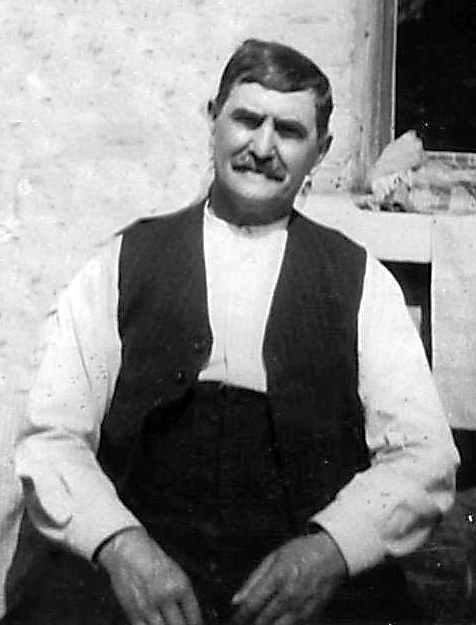
This was the first meeting with Pam, she was 14 at that time.
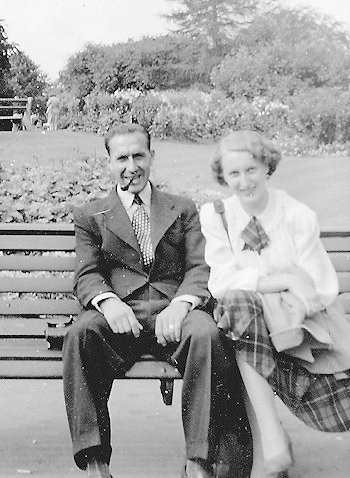
Arthur Baldock was a ship's painter living in Mile-End-Old-Town at the turn of the century. He was living with his married sister; there were a total of 11 people living in the house. After his marriage to Nell in 1908 they moved several times, before getting the house in Downham in 1928.
South East Row c.1920
Arthur served with the 10th London Rifles during the First War, and before he went to France he was stationed in Teignmouth and Shaldon in Devon.
it would appear that Arthur got to know a local family, the Drews, and after the war they stayed with them for holidays. Later after Tiggy married they also went to stay with the Drews. Later still Pam and I went to stay with Freda Drew, who also ran a guest house in Teignmouth.
Arthur was at Ypres in 1917 and the Somme in 1918, and survived unscathed. There are no surviving letters from him, as such, but a lot of postcards. The text is very similar on most of them. I have some 70 'silk' cards, that Arthur sent from the front, and also quite a few cards of the more traditional type. The messages in the cards, are in general, confined to just 'God Bless you' and kisses. But there a couple of interesting cards, the first card read: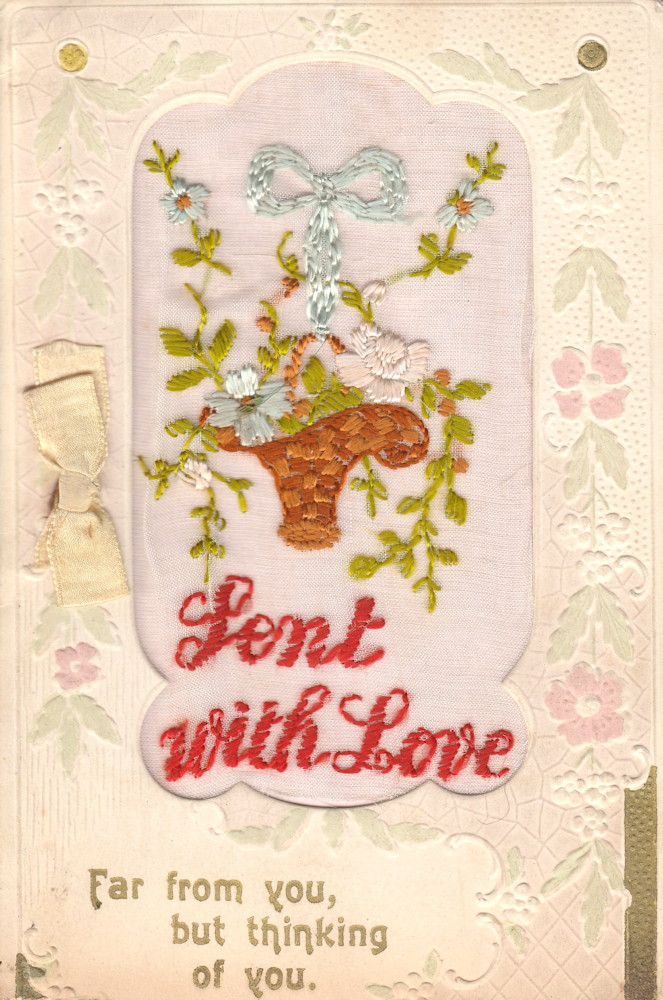
and My Darling Tiggy
God bless you and Dear Old Mother and
Dear old Jim Grandfather Jennie and the Babys all
Dear Nell I have had to cut the card but
I have and never will cut out any of My Love for You and our Darling Tiggy
From Your Ever Loving Husband
Arthur
The cut I think refers to the bottom of the card being trimed, to go in an envolope. Judging from the message I think it was written to Nell when she was still living with her sister's family and her father.
The second was written after the bombing of Tiggy's school, when Nell and Tiggy may have moved in to South East Row. It is shown below: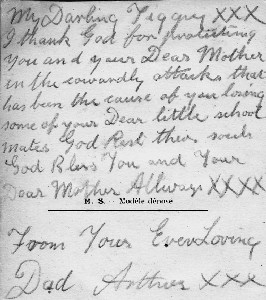
I don't know what Arthur did after the war but at some time he was a Gas Lighter and in 1933, at the time of Tiggy's marriage, he was a Storeman. I found some notes that Pam had made on the bombing of the School and the after effects:
On June 13th 1917 the school where my father attended – Upper North Street School, Poplar – was bombed, one hundred and four people were killed, 16 of these were 5 – 6 year olds (my father's age at the time) and two older children. I was told that when my Gran heard the news she made her way home from Silvertown where she worked, only to find her mother and son waiting waiting by the door of the house, at which point she collapsed with relief at seeing him.
[The Silvertown Explosion occurred on January 19th 1917 and the area was laid flat, so maybe she was working somewhere else in Silvertown, rather than the munition works.]
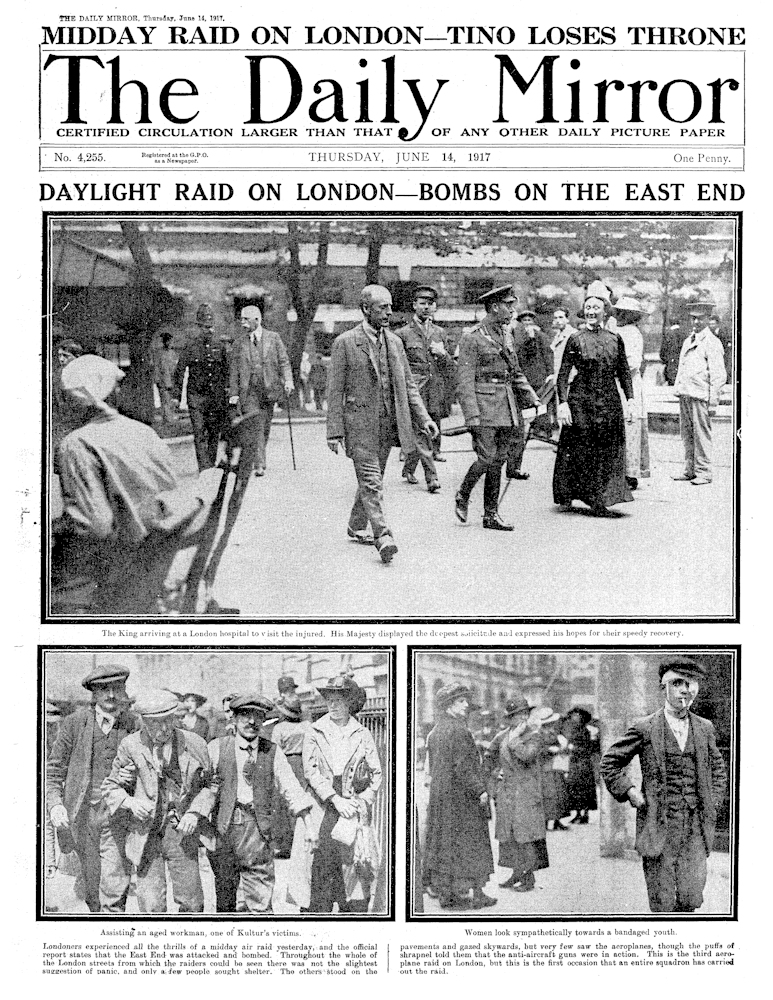
London Hospital to visits the injured
The bombing was reported in the local paper:-
'Death From The Sky'The morning of Wednesday June 13 1917 was hot, and the sky was hazy. Nevertheless, onlookers in London's East End were able to see 'a dozen or so big aeroplanes scintillating like so many huge silver dragonflies'. These three-seater bombers were carrying shrapnel bombs; that morning they killed 104 people. Sixteen of the dead were 5- and 6-year olds, in their classroom at Upper North Street School, Poplar; two older children also died. 'The sun had been shining, and then it seemed to go out in a roar of thunder.'
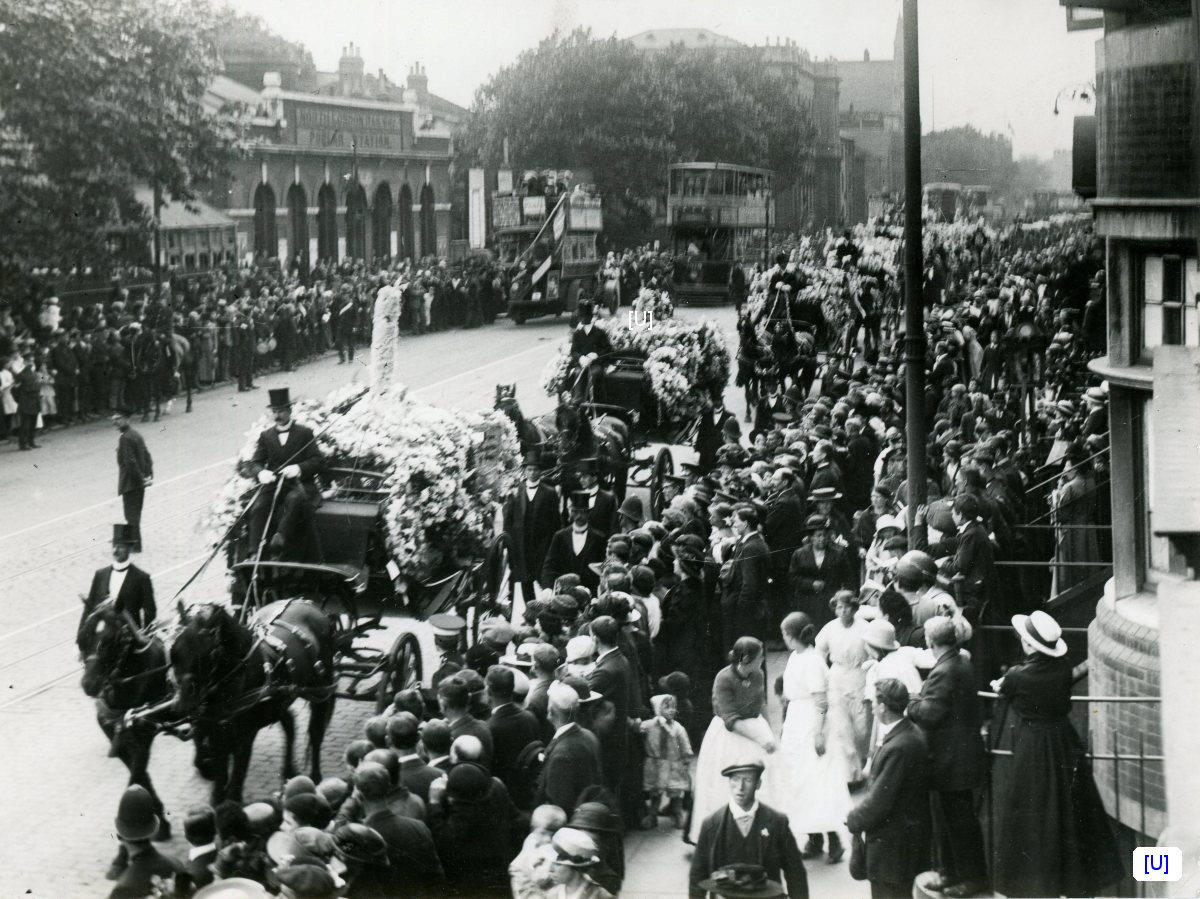
About a week later, one of the biggest funerals in London was held for these infants. It was a sad day. Fifteen children were buried in a mass grave at the East London Cemetery, while the other three children had private graves. Brothers and sisters of the children looked on with mournful faces, some having also been in the school at the time of the bombing.
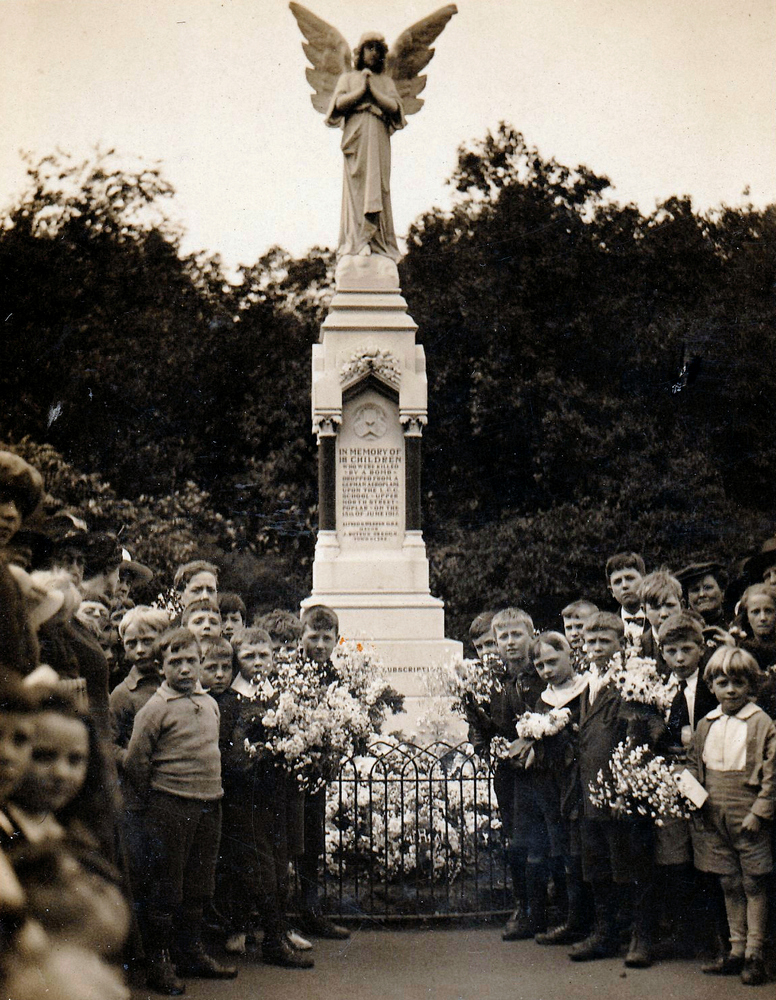

Soon after the bombing of little Arthur's school, Nell took little Arthur, her mother and brother to Shepperton. It is not clear if they had contacts there, or why they chose Shepperton. They found accomodation in Bravington Cottages, there are a number of post cards bearing that address. My father [Tiggy] attended the local school and made friends there – Jack Healy and Ruth Alderman or Bruse as she was then. It was Ruth's house that we all lived enduring WW2. By that time Jack Healy had a farm in Sheperton or on the outskirts. So certainly they had contacts the second time around.Pam told me that at Christmas time the odd pig would be diverted from Jack's farm and pork would be on the menu.
I also have two post cards [written in pencil and very faded] addresses to Arthur they were enclosed in an envelope so there is no address or postmark. They are both photo cards of Shepperton Church, inside and out. The first from Jenny, Nell's youngest sister, and her two girls, Jean and Marie, known in the family as Bobby and Brud. The card mentions the Bing Boys, and it sound as though it meant the German airforce! It reads:
Dear Arthur
Many thanks for your kind and welcome letter and lovely card. We are all having a grand time down here and the weather is beautiful, I and Jim [Nell's brother] have been blackberrying and have got a rare lot and plenty of pricks. The two girls go to school with Tiggy and like it very much. I am glad to say the Bing Boys have been quiet for a while and hope we shall not have many more of them. It's like being in Paradise down here to what it is in London with all its scares and frights. They all send their kindest love and best wishes.Jenny
The second card was from Tiggy. I think that they were sent to Arthur and he brought them back when he returned from France, or they were written but never sent.

Jean, Albert and Marie c.1915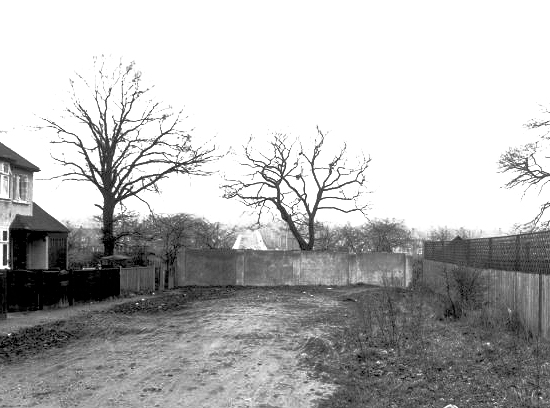
[u]
Arthur and Nell moved in to 106 Churchdown as soon as it was built in 1928. I think Tiggy was now about 18. He stayed in London and lived in Katherine Building as did his future wife, Caroline Dongray. It is my guess that this is how they met. They married in St Paul's Church Whitechapel London in 1933 but the wedding celebrations took place at Churchdown.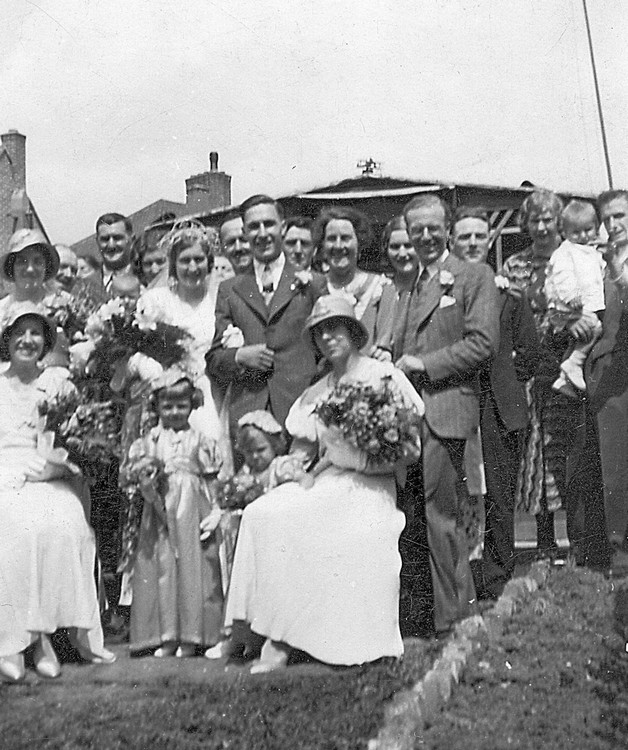
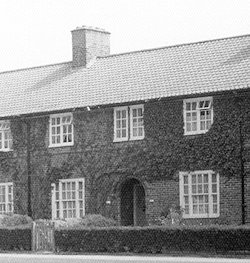
photo: Lewisham Borough Council
The house at Churchdown had two bedrooms, bathroom, kitchen and living room, no electricity only gas. So the radio worked from batteries, the cooker, the copper and the iron were gas as were the house lights. There was a hand pump in the kitchen which could pump hot water from the copper to the bath above. In fact they had only had electricity laid on a couple of weeks before I knew Pam. [106 Churchdown looked like the left hand house in the picture]
Pam was born in Churchdown two years after the marriage, and they all lived in the house until the outbreak of the Second World War. To commemorate Pam's birth Arthur planted an oak tree in the garden. In 1995 we went back to Churchdown and the tree had grown to full size, and must have overpowered the garden. After Pam's death I went back again but the tree had been cut down.
It was not until the war ended that Pam and her parents came back to Downham leaving Arthur and Nell to live in Shepperton for the rest of their life.The School Lane cottage that they lived in was a two-up-two-down design: WC at the bottom of the garden, only gas for lighting and cooking and the only heat was a range in the front room, which they could also cook on. When I first knew Pam we went down and stayed the weekend, I slept on two easy chairs put together. When our children were little we would go down to see Arthur and Nell for the day. He would have a string of stories and keep-box of curiosities, collected from jumble sales, and kept under the bed. After taking Pam home on that Friday night and thinking about her all Saturday, on
Sunday afternoon I went round and knocked on the door, to her shock, I was asked in and I joined her and her parents listening to the radio. I had my joke book from the library with me and I read some of them out after 'PC 49' had finished on the Light Programme. I stayed till teatime and we agreed to meet the next day. From then, we saw each other every day except Thursdays, when she had her hair done. On our first Wednesday I asked my mother if Pam could come round for the evening. She asked where Pam lived and when I told her, she was rather concerned. I don't know what she expected, but when Pam came round all my mother's fears were dispelled. Pam and Gordon, 2 years younger than Pam, got on very well together and shared a love of theatre and films. My father drew several pencil sketches of her. Pam played the piano at the club one night. Her party piece was Moonlight Sonata. I offered to turn the pages but she said the music is there just in case: she was playing from memory. I always went round to her house on Sunday afternoons and some times she would play. But after a couple of years together she gave up. Pam was still at school in 1951 and on weeks when I was at college I would wait at the tram stop for her and then follow the tram on my bicycle to her school. We would stand on the curb chatting until the bell rang. Pam was told off on on occasion for bringing the good name of the school into disrepute: we were just kissing goodbye. Pam left school in July 1951 and joined the Post Office engineering drawing office as a tracer, a job that she enjoyed. I was spending every other week at college at that time, so I had
work to do in the evenings but on several occasions Pam wrote up lab reports for me, and I got comments 'your hand writing has improved of late!' Pam took me up to Katherine Buildings, where her mother grew up, and we walked round meeting people. We met Pam's maternal grandfather Joseph Dongray. he spoke to Pam and completely ignored me. Pam said it was because he didn't know you. In 1953 when my brother Gordon started work at the A&N Bank, Pam and Gordon would spend the 30 minute journey to London reading "Gone with the Wind". On one occasion I opened the book and read a few words, and Pam would be able to finish the sentence. It later became a party game. Later in life we would be talking of some occasion in the past and Pam would be able to recall the clothes that were being worn by those present and if it were a meal, the food we had. Pam's memory of times and places is one of the things I miss. I should have written this much earlier and maybe I could have had more details of Shepperton. It was some time in 1953 that I asked her to marry, be she said we were too young but agreed to an engagement on my 21st birthday. So in May 1954 at my 21st party we became officially engaged and decided to marry a year later. I started my national Service in the RAF in November 1954 and we were parted for some 8 weeks. The initial training was over in December 1954, and I remember Pam coming to meet me at Euston Station. The elation I felt on seeing her and hold her again was indescribable. We were never parted for so long again. For the rest of my time in the RAF, I spent at Bawdsey and I was able to get home once a fortnight or so. While I was doing my National Service, Pam changed
jobs. She had been working for the GPO and had seen an advert for a tracer at Pre-Stressed Concrete in Victoria. She applied and during an interview she was told the job was hers, but the salary would only be £7.0.0 instead of £7.10.6 a week, because of her age. She would meet up with Gordon and her friend Joan at lunch times, spending his luncheon vouchers. Gordon, who then worked in the city, seemed to have extended lunch hours! On demob I went back to Small Electric Motors where I had been an apprentice. I had arranged for Pam to work there as well. At lunch times we would go down the road to the new 'Coffee Bar'. After about 6 months I looked for a better job. During our time at SEM we lived with my family. In the evenings my mother would sit and do her accounts. Pam and I would watch TV or play records and my father would read the paper. Gordon was doing his National Service in Germany during this time. On one evening my father taught Pam phonetically Ochi chornye – 'dark eyes' - a Russian folk song which she would sing while he played the mandolin. Mid 1957 saw our life change the new job was with English Electric based in Stevenage. It had the advantage that it came with a When we moved in some of the paint was still tacky. The living room had an open fire with a back boiler for the hot water. Pam set to work to make it a home and her first project was making red velvet curtains for the living room. Sewing velvet on hand machine was a challenge because of the 'nap': the seams just would not keep straight for her and it took several attempts to finish them, but finish she did. After that sewing became much easier. Pam was pregnant with our first child so there were baby things to knit. When Simon was born he was a problem feeder. If he woke too early or if he was late, Pam would worry, and he would cry. He did not know feeding was every 4 hours. Eventually we saw the Doctor (Dr. Johnson) and he said 'he can't tell the time yet' so feed him when he wakes. At that time, the advice was against all the guidance in the books. The doctor was right. Simon soon fell into a reasonable routine. Pam met Glenys at the baby clinic when she was expecting our second child. She had her daughter about the same time as Ruth. Glenys became one of Pam's life time friends. I have letters from Glenys going back over 50 years. Pam kept the letters and cards she received: there are boxes and books of them. Gradually we got the house as we wanted, we changed the open fire to a free standing enclosed fire, which was much more efficient. After she had been making the children's clothes, and clothes for herself, she even made clothes for the dolls, a football strip for the action men was included. Recognized as one of the most frequent and competent dressmakers who shopped for material at John Lewis in Watford, she was once offered a job by the department head. She thought about it but turned it down. In 1968 Pam started French classes and I think she carried on for two years, I remember going in to a French hotel, one holiday, and Pam having a long conversation with Madame on why it would be better to have a family room which was available or two rooms which is what she had asked for, and was not available. Madame convinced Pam and the four of us slept in this very large bedroom with lots of beds, and a screen to undress behind. After I started Aids Electronic Ltd in 1969 Pam enrolled on a typing course to work as the company secretary. She typed letters and did the payroll from 1973 when we took on some staff. In 1981 I designed a keypad for the Apple// and we started to assemble them, a job which Pam did very easily. Later she assembled the more complex boards for the In 1986 when Simon got married Pam took up photography, and over the years she must have taken several thousand pictures, at first on film and later digitally. When the pictures were printed and selected they would be put in the album, and when full an index would be produced. pictures that were not selected would be put in to an indexed box, encase they were required for reference purposes. The negatives were put away and each picture was given a reference to the negative. Art was one of Pam's interests, and because Watford was the last stop on the underground, it made getting into London very easy (just 40 minutes). She was able to visit the galleries. She especially liked the RA in Piccadilly and became a Friend of the Royal Academy in 1984 and continued until 2011. After 2006 going up to London was much less frequent since we had moved up to Loughborough. Pam had built up a large collection of art books, and catalogues from exhibitions. During our jaunts abroad Pam was able to see some of the pictures she had read about, which gave her great satisfaction. But she most liked doing these things with other people and sharing the experience. She loved buying presents and giving treats: meals, trips, things we wouldn't otherwise do. Pam loved all the glitz of Christmas, even though preserving the magic of it involved a lot of effort. One of the cuttings in her Christmas recipe book is from John Masefield's Box of Delights, which she heard read on the radio in the 40s and associated with her grandfather, who had been a lamp-lighter. Pam never wanted to drive although she did have a go, on a big sandy beach up north on one of our visits. I think she enjoyed it, but did not take it further. In 2006 we moved to Loughborough, and the curtain making started again. We decorated most of the house to suit our taste. We had more space than in Watford but there was always a bed made up for any visitor just as there had been in Watford. Pam had another garden to look after. As time passed, it became more difficult because of her arthritis, but she did get it sorted. On Monday 25th April 2017 Pam was admitted to hospital with Sepsis and Pneumonia. Then on Saturday 21st May she had a serious heart attack. No sooner had she started to recovered she was again hospitalised with a blood clot on the bowel. These 3 episodes had taken their toll, and it left her weak and short of breath, making walking any distance impossible. Pam was not to be deterred and still tried to keep the garden in order, although not to her complete satisfaction. Over the next few months her breathing improved sufficiently that she was able to go on outings. Although we did not talk about it, I think we both realized that time was getting short. Pam did not give up, she continued her normal life as far as she could. On Saturday 2nd December 2017 Pam had a second heart attack and after several hours of determined work by the paramedics, she died early Sunday morning 3rd December 2017, after 66 years 10 months together. - She was my Pam.
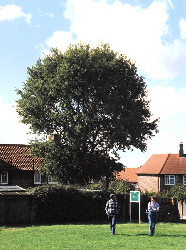
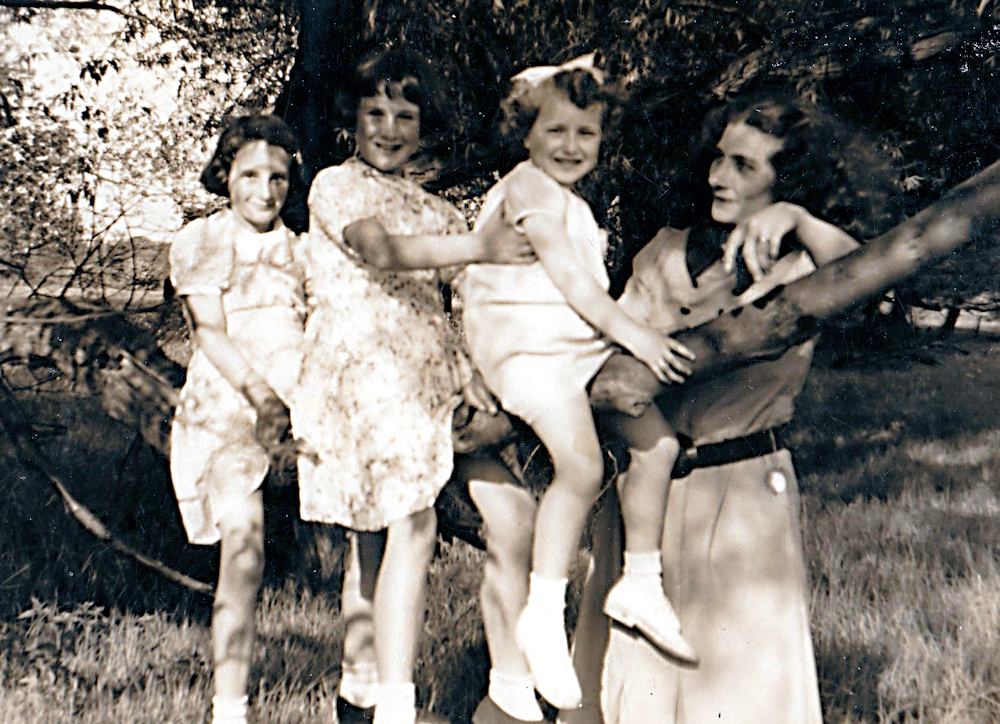
Ruth Alderman
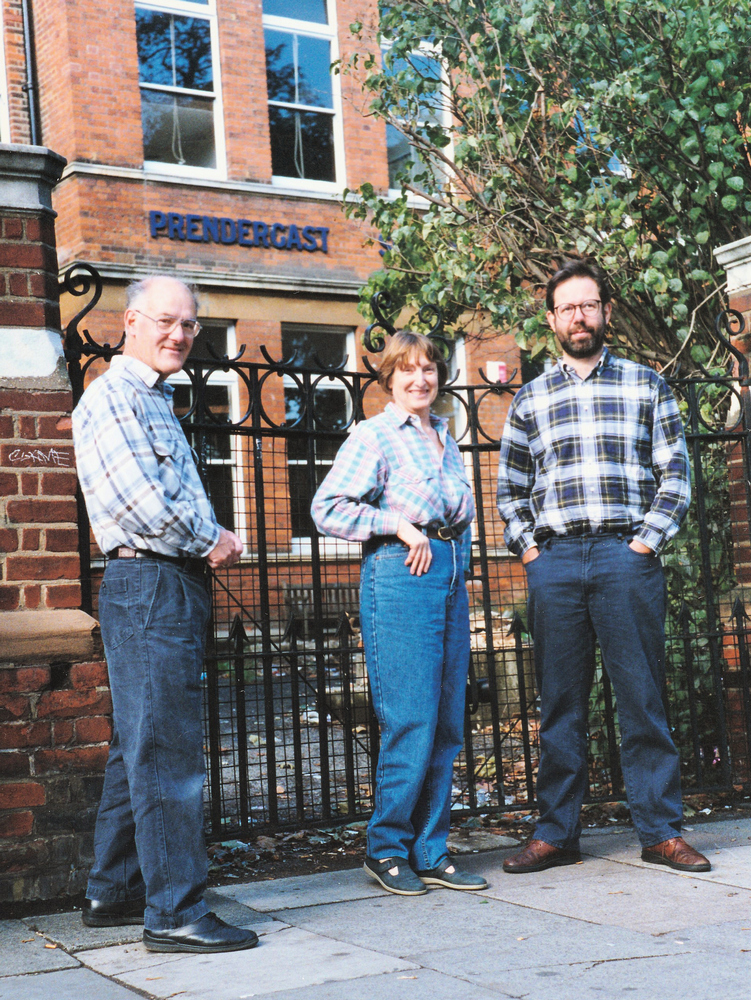
outside Prendergast 1995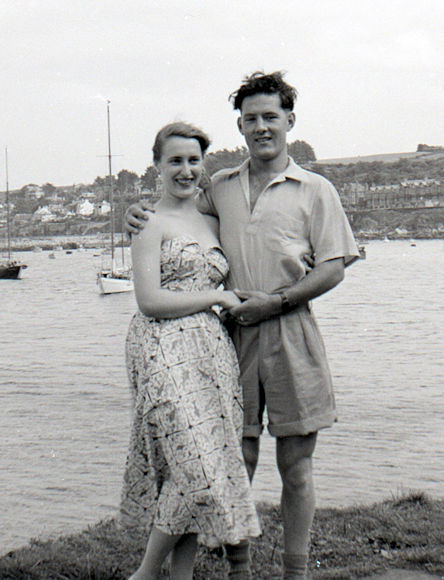
Pam in her modified Dress. 
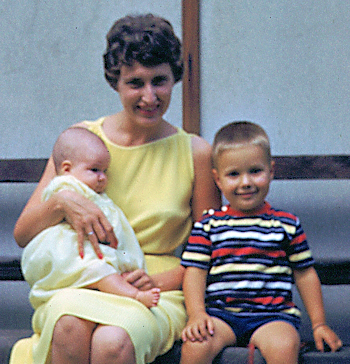

I installed central heating, I re-wired the whole house. I changed the glass in some of the windows to double glazed units; I extended the kitchen so we could eat there and built most of the cupboards. It took about 10 years to complete. Pam spent a lot of time in the garden getting it just to her liking. There were apple trees and in the autumn the apples were picked and made into pies and then frozen.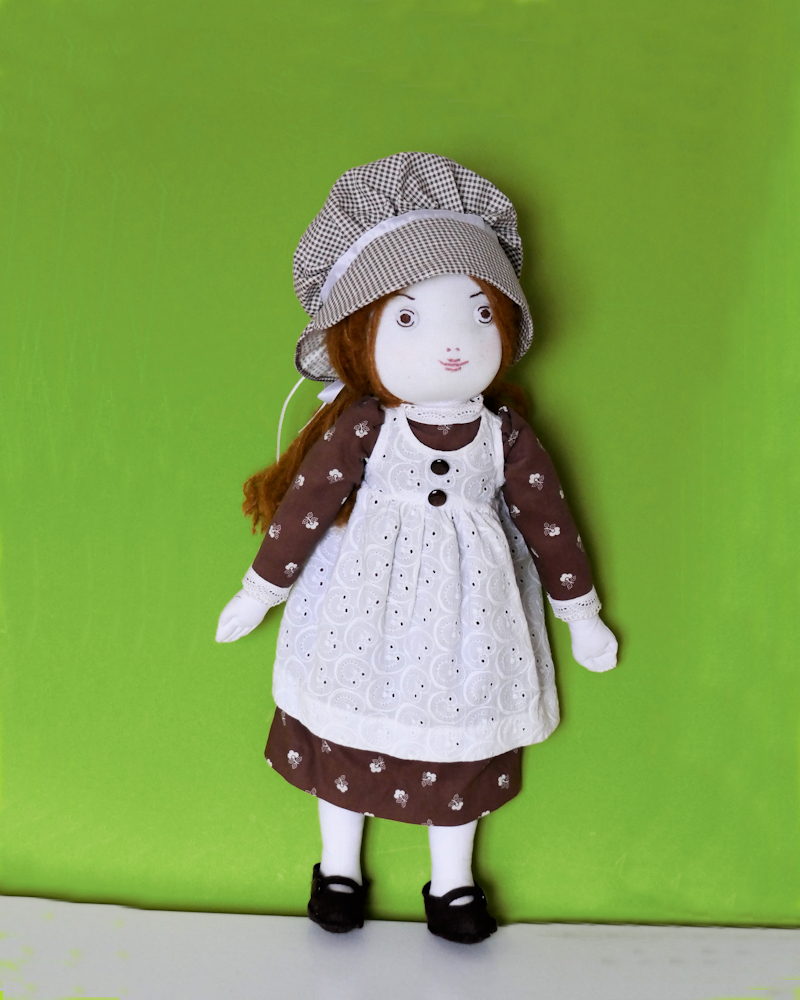

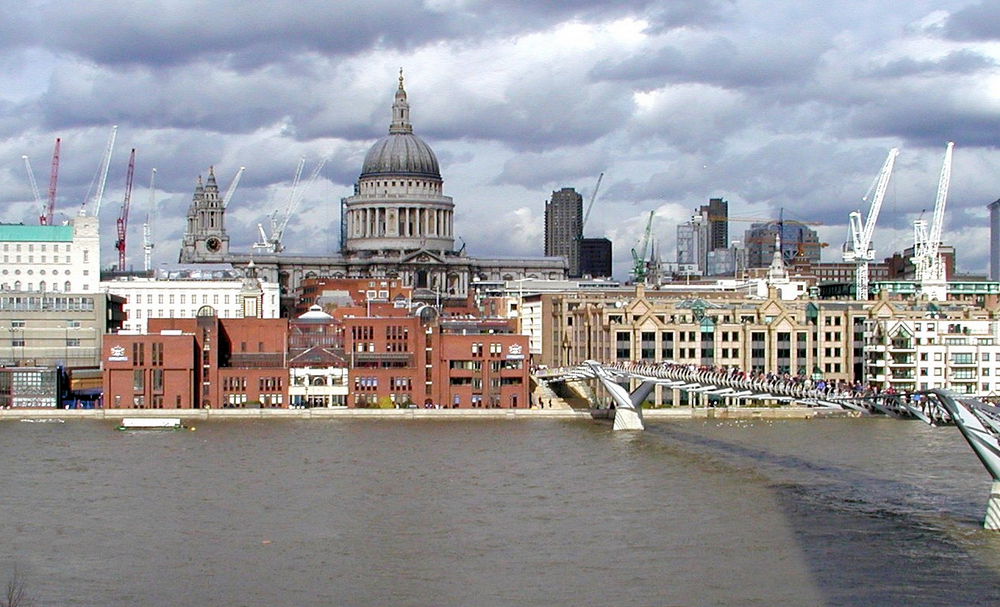
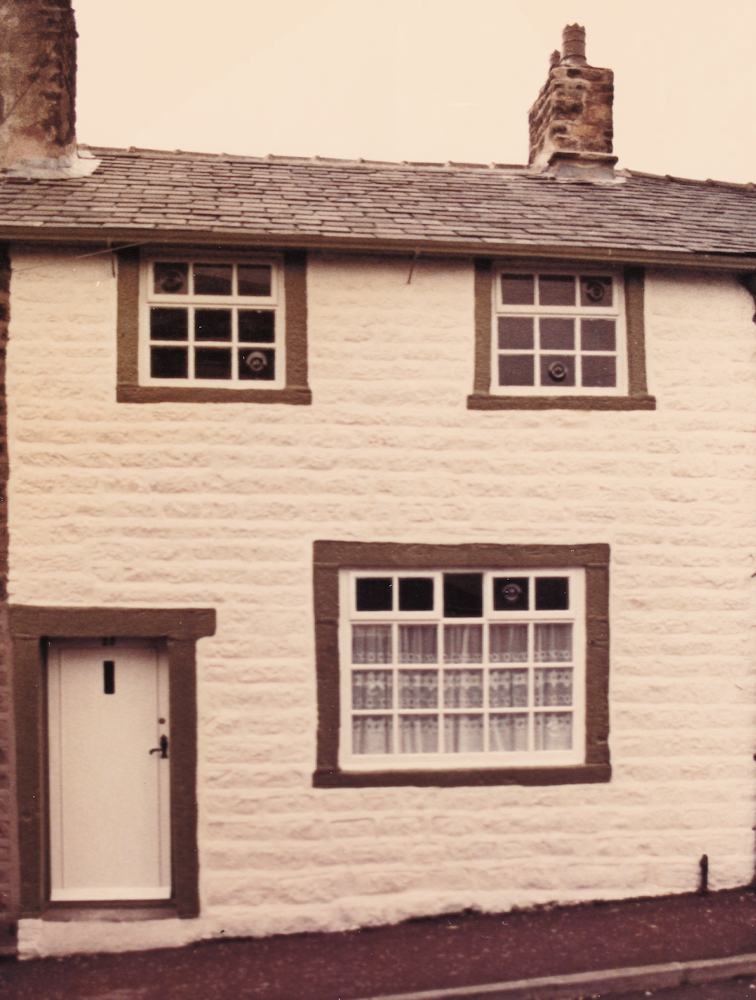
As they entered the little street, it was so dark with all the promise of snow that the shops were being lighted. They were all decked out with holly,
mistletoe, tinsel, crackers, toys, oranges, model Christmas trees with tapers and glass balls, apples, sweets, sucking pigs, sides of beef, turkeys, geese, Christmas cakes, and big plum puddings.
Pam did a lot of cooking and as she found a recipe that she liked she would write it up, and eventually compiled a book of "Tried and Tested" recipes including the source of the recipe, photos if possible. The pages were numbered: page 153 is the Cinnamon and Walnut cake that I now make most weeks, my favourite.